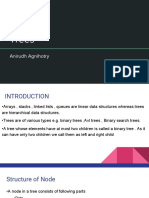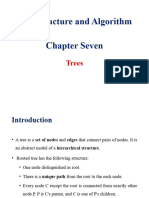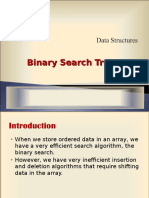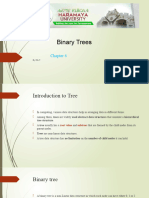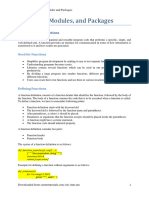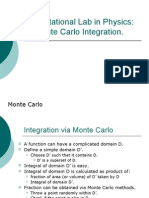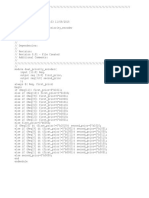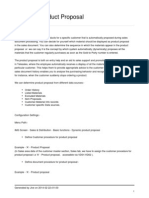0% found this document useful (0 votes)
35 views30 pagesChapter 3 Part Three Tree
Chapter 3 discusses data structures, focusing on trees and binary trees, including their definitions, properties, and terminologies such as nodes, parents, children, and traversal methods. It explains binary search trees, their insertion, searching, and deletion processes, along with time complexities associated with these operations. The chapter also covers tree representations and the significance of tree traversal in data organization.
Uploaded by
firehiwotCopyright
© © All Rights Reserved
We take content rights seriously. If you suspect this is your content, claim it here.
Available Formats
Download as PPTX, PDF, TXT or read online on Scribd
0% found this document useful (0 votes)
35 views30 pagesChapter 3 Part Three Tree
Chapter 3 discusses data structures, focusing on trees and binary trees, including their definitions, properties, and terminologies such as nodes, parents, children, and traversal methods. It explains binary search trees, their insertion, searching, and deletion processes, along with time complexities associated with these operations. The chapter also covers tree representations and the significance of tree traversal in data organization.
Uploaded by
firehiwotCopyright
© © All Rights Reserved
We take content rights seriously. If you suspect this is your content, claim it here.
Available Formats
Download as PPTX, PDF, TXT or read online on Scribd
/ 30



